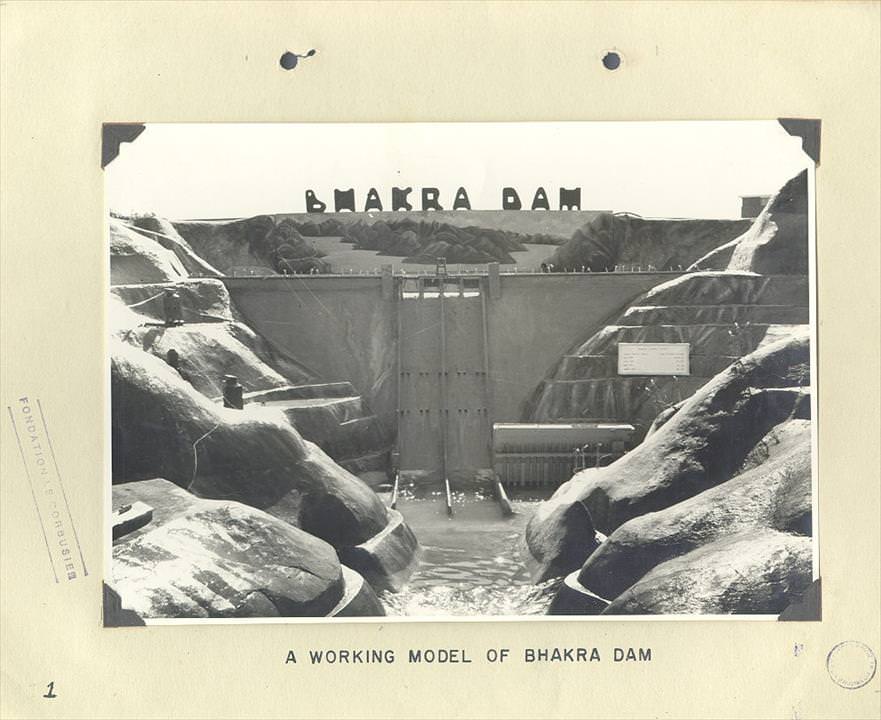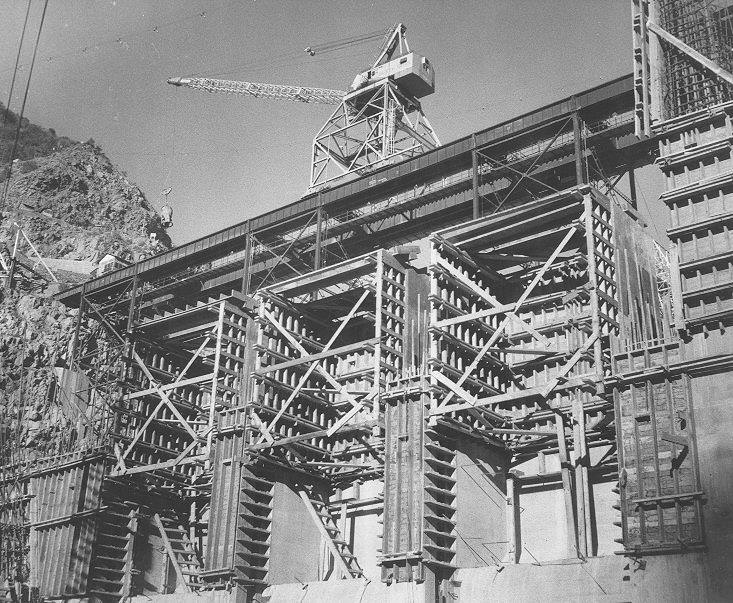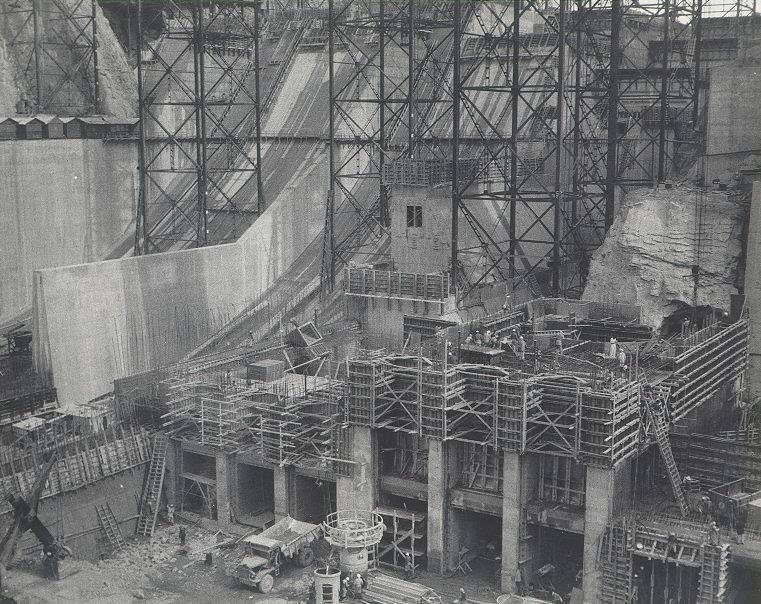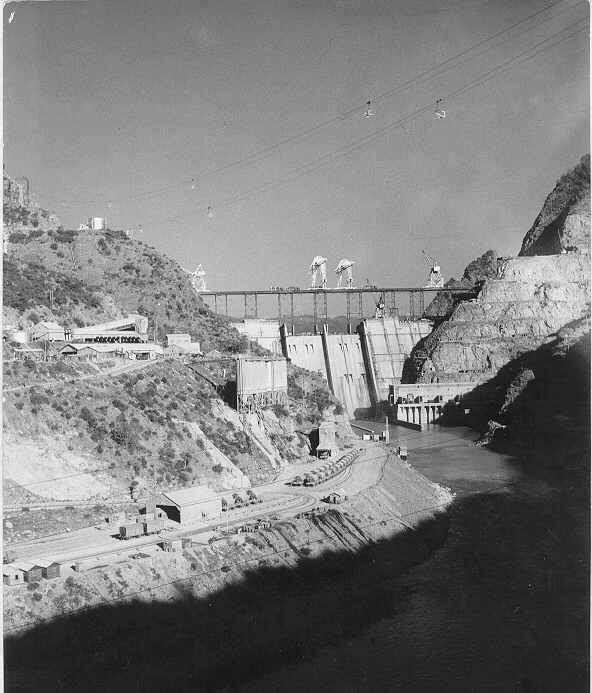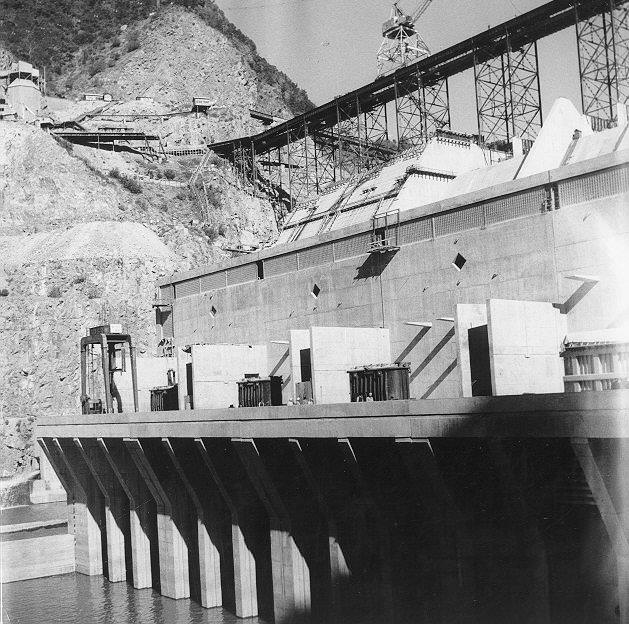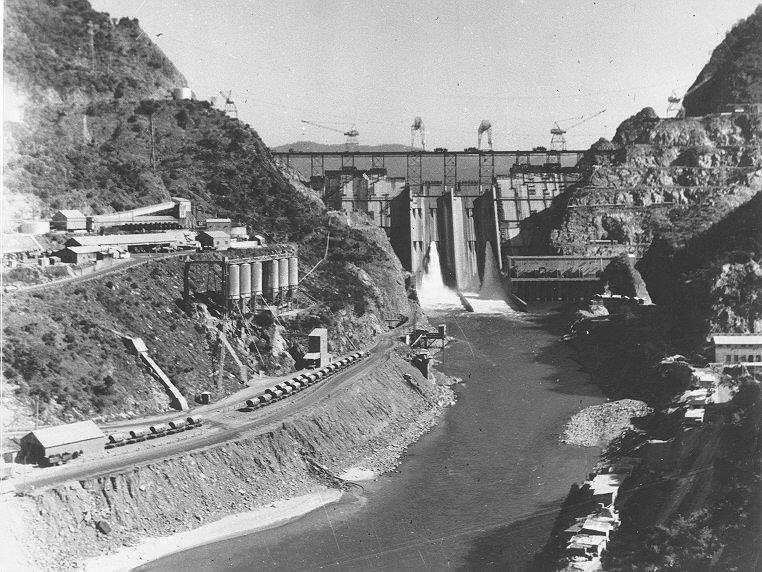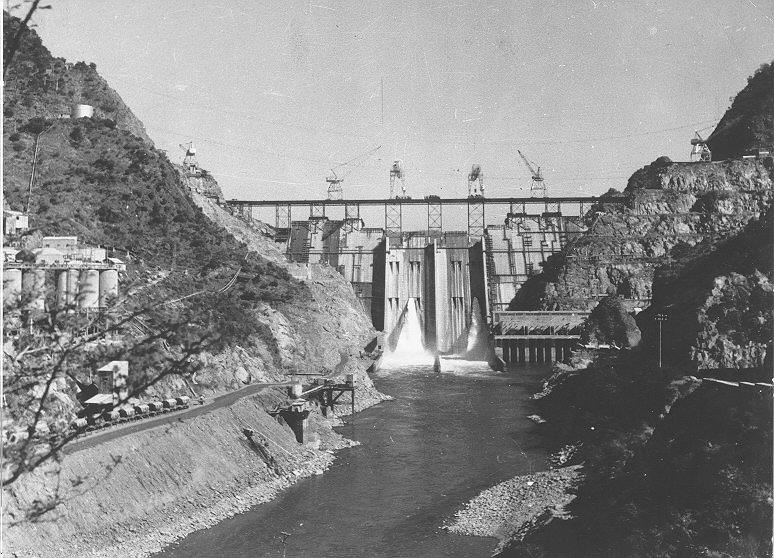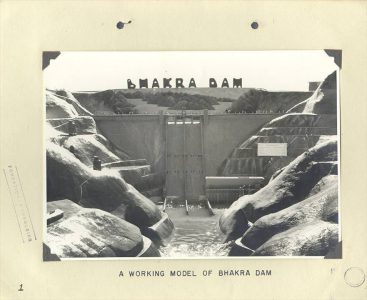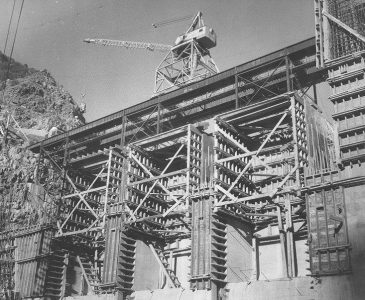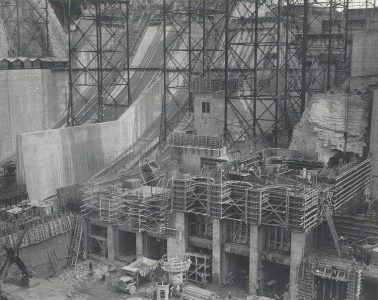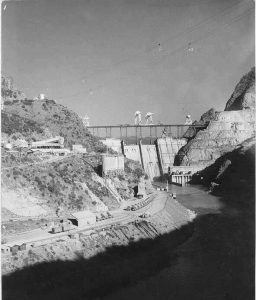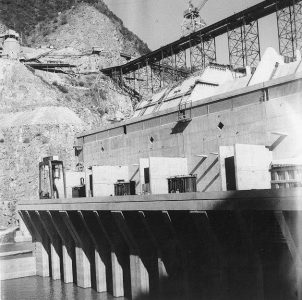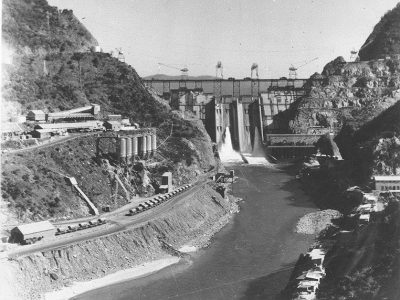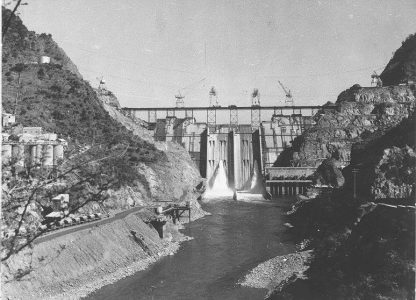Dam, Bhakra
India, 1955-1963
« My ideas are in my head and not just on the hands of my watch. What I brought to the Bhakra Dam is the experience of a whole life. In response to the emergency of the Bhakra Dam site, I carried out considerable intellectual, technical and manual work in Chandigarh for several years. »
Commission
The project known as the “Bhakra Dam” was actually more complex than this, since it originally included not only an impressive barrage holding back a reservoir of more than 100 km2, designed to irrigate part of the Punjab, but also two power plants as well as housing for the staff.
Le Corbusier was called upon in 1955 as consultant architect for a dam situated at a point 100 kilometres north of Chandigarh, in the state of Himachal Pradesh. Work was begun in 1948.
At the onset of building work on November 17 1955, a further call came from Prime Minister Nehru. He proposed surmounting the construction with a monument to commemorate the part played by the many workers involved in this gigantic site (some, indeed, were to give their lives).
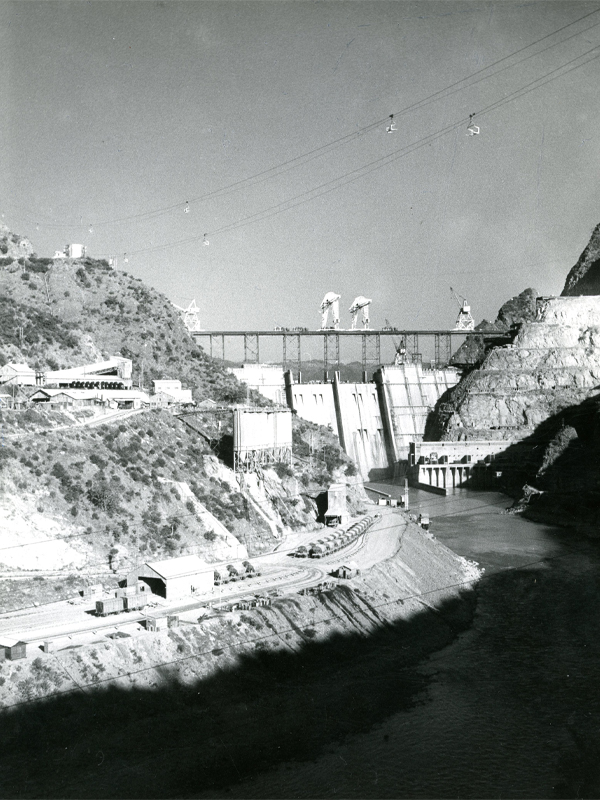
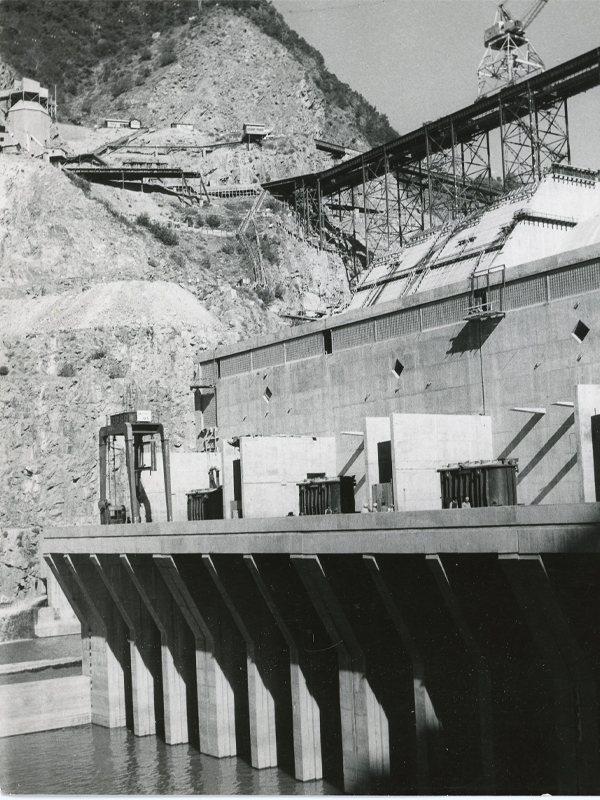
Project
It was P.L. Varma, chief engineer of the Punjab, who asked Le Corbusier to work on the Bahkra Dam. For Le Corbusier, this was an opportunity to take on a type of construction for which he had already shown interest in writings of the 1920s, such as Urbanisme or L’Almanach d’Architecture Moderne.
Taking the project to heart, Le Corbusier proposed various improvements, such as a monument surmounting the dam or a footbridge to give visitors an exceptional view of it. He also conceived a sculpture of the Open Hand similar to the one planned for the Depth of Consideration in Chandigarh, which would have created a link between the top of the dam, the water and the sky. In the most ambitious versions of the project, there are plans for a museum, a cafeteria, a hotel, a tourist centre and even a sports club. None of these proposals were taken up by the Indian administration.
In 1958, Le Corbusier also thought about designing an access to the dam that would not spoil the harmony of the landscape. But there too he encountered resistance, first from the engineers feeling dispossessed of their work, and then from the authorities deterred by the additional costs of these operations.
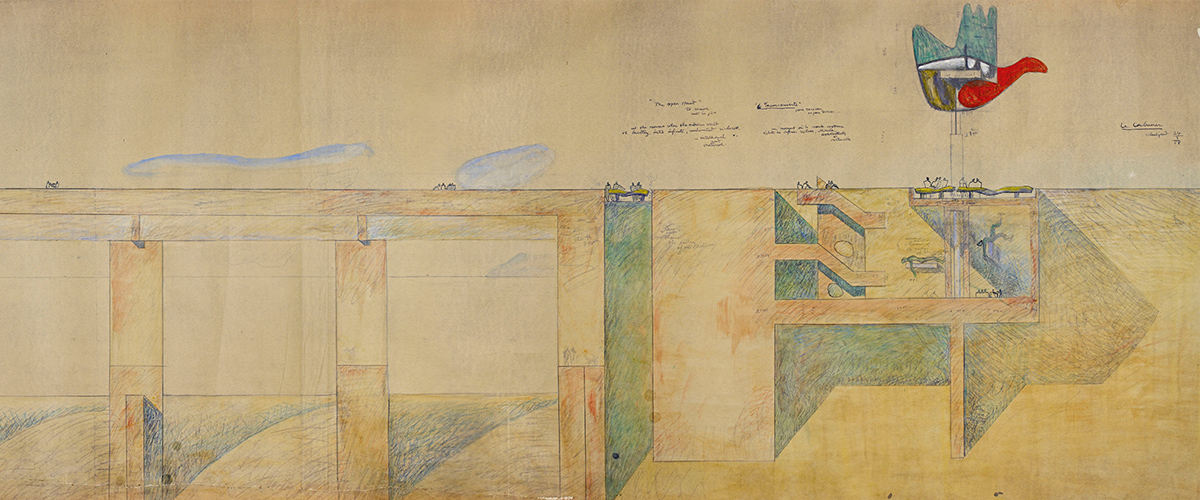
Subsequent History
The dam was inaugurated on October 20, 1963, in the absence of Le Corbusier who regretted not having been invited.
The structure is still in operation today.
